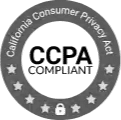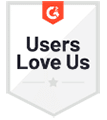How sales enablement can help you reach your 2022 revenue goals

Table of Contents
It’s a new year, which means new ambitions, and for most enterprises, setting new revenue goals. But while it’s easy to set new revenue targets, it’s not always so easy to hit them.
There’s a whole range of possible strategies you could take to help you reach your revenue goals this year, but a poll I ran together with my “partner in crime” Crystal Nikosey, Customer Evangelist at Second Nature, that asked revenue teams what they’re doing to reach their goals revealed that the most popular tactic is to ramp up sales enablement. When offered 4 responses:
- Nothing, we are doing great!
- Outsource sales training
- Re-evaluate our tech stack
- Hiring sales enablement
70% of revenue teams that responded to the poll said they’d be expanding their sales enablement teams.
Surprised? Don’t be. Sales enablement teams are, at their core, responsible for powering extraordinary buyer journeys, and they do that by providing sales teams with the tools, content, and most importantly, confidence to make those experiences a reality.
Some companies will already recognize this description, but for others, sales enablement isn’t yet a revenue-driving powerhouse.
Why extraordinary buyer journeys rely on sales enablement
Enterprise sales keep getting more complex
B2B enterprise companies are grappling with increasingly complex sales situations. Your competition grows every year, your business expands into new markets, you launch new products, features, and version updates at different times and for different audiences.
And meanwhile, buyers are undergoing a major shift to self-driven purchase journeys. The 2021 B2B TrustRadius report found that 57% of buyers already make purchase decisions without touching a sales employee, and 87% want at least part of their buying journey to be self-service.
Sales processes need to be more customized
That doesn’t mean that sales experts are out of the picture. On the contrary: now that the sales process is buyer-oriented and customized, rather than product-focused, sales enablement teams are the linchpin in your revenue strategies.
Sales employees who speak with buyers every day will have priceless insights into what is needed for an extraordinary buying journey. Because sales enablement touches sales, marketing, and customer success, they can help data flow smoothly around the organization, unifying all those departments around a single vision.
Selling skills need to keep step with new buyer journeys
As sales processes grow more complicated, sales employee skills need to keep up. Research among sales enablement teams found that 7 of the top 10 growth inhibitors are directly related to insufficient sales skills – but sales enablement can help sellers develop strategies for every eventuality, not just what’s taught during formal training or what they pick up through experience.
Sellers need to understand not only “how” to sell, but how to create the best experience for buyers. By linking sales enablement with other departments, they can educate sellers towards a deeper understanding of the underlying value proposition and messaging, which makes their conversations more natural.
Integrated sales enablement means optimized sales processes
Finally, when sales enablement is thoroughly integrated into your revenue strategy planning, it helps you optimize your sales processes. Sales enablement touches all departments, so when sales enablement personnel are part of the main decision-making, processes like handing off from BDR to AE, or AE to CSM, will be optimized for the circular flow of info from marketing to sales to customer success.
How to use sales enablement to hyper-charge your revenue
Give sales enablement leaders a seat at the table
Very often, sales enablement teams sit outside the central sales strategy process. Decisions that impact on sales methodology get made without the input of enablement personnel; sales enablement teams get no advance warning to prepare for new revenue strategies; and enablement is left to operate in isolation.
But when sales enablement has such an important role to play, you can’t leave the team out of your planning. It’s important that business leaders recognize the contribution made by sales enablement, and invite them to help design and create the new sales methodology from the get-go.
Share data generously
You can’t expect sales enablement teams to produce full guidance without sufficient insights and data. You need to share data that’s directly tied to revenue so that sales enablement can align programs to business outcomes before creating the new sales approach.
Sales enablement is also your gateway to full cross-departmental transparency between sales, marketing, and customer success. You should view enablement as your gateway to the sales teams which will turn your ideas into sales-ready messaging that can deliver on organizational revenue goals.
Support sales enablement as a strategic GTM partner
You need to see and support sales enablement as a strategic go to market (GTM) partner, which deserves a voice where decisions are made.
If a new sales methodology is being considered, your marketing, sales, and enablement leaders need to work through the design and messaging process. But just as importantly, sales enablement will need to strategically work with the other leaders to crunch data and decide on the best launch date for your next program.
The best way to hit your 2022 revenue goals is by making sure that sales enablement has a seat at the table. In order for this to happen, you need to do 3 things:
1) Keep selling skills up-to-scratch
2) Deliver extraordinary buyer journeys.
3) Sales enablement training – Every athlete trains for the chance of winning a medal and your sales team is no different.
Want to learn more about how we can help you do this? Talk to me!
Learn how Second Nature can help improve your sales enablement efforts.
We’re Hiring
We have positions available in our Tel-Aviv and New York offices and remote/hybrid.

 7 MIN. READING
7 MIN. READING


